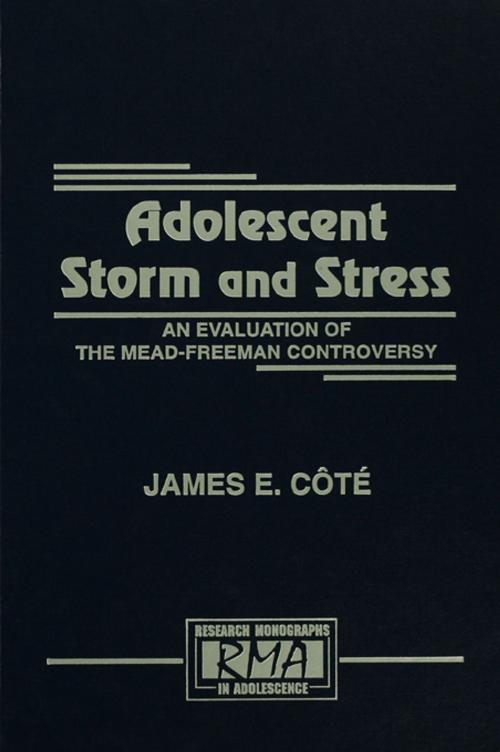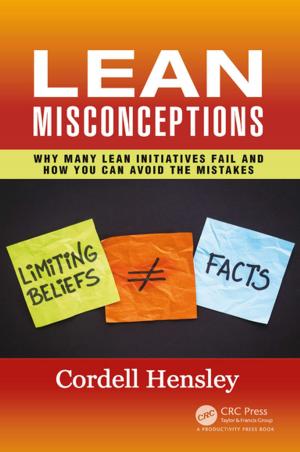Adolescent Storm and Stress
An Evaluation of the Mead-freeman Controversy
Nonfiction, Health & Well Being, Psychology, Developmental Psychology| Author: | James E. C“t‚, James E. Cote | ISBN: | 9781134782819 |
| Publisher: | Taylor and Francis | Publication: | June 17, 2013 |
| Imprint: | Routledge | Language: | English |
| Author: | James E. C“t‚, James E. Cote |
| ISBN: | 9781134782819 |
| Publisher: | Taylor and Francis |
| Publication: | June 17, 2013 |
| Imprint: | Routledge |
| Language: | English |
In 1928, Margaret Mead published her first book, entitled Coming of Age in Samoa, in which she described to the Western world an exotic culture where people "came of age" with a minimum of "storm and stress." In 1983, Derek Freeman, an Australian anthropologist, published a book in which he systematically attacked Mead's conclusions about that culture and the way people came of age. Since then, a great deal of attention has been directed toward the Mead-Freeman controversy. This book contributes to that controversy and to the general understanding of adolescent storm and stress by undertaking an interdisciplinary analysis of Freeman's criticisms and an assessment of the plausibility of Mead's work. Addressing the issue of what has become of Mead's Samoa of the 1920s, this book historically tracks the nature of the "coming of age in Samoa" to the present, in order to give the reader an understanding of the circumstances confronting young people in contemporary Samoa. It shows that Mead's Samoa has been lost; what was once a place in which most young people came of age with relative ease has become a place where young people experience great difficulty in terms of finding a place in their society, to the point where they currently have one of the highest suicide rates in the world.
While much has been written about this controversy during the past decade, a gap exists in the sense that most of the publicity about Mead's work has missed her main focus concerning the processes governing the "coming of age" of her informants. A valuable historical document and a pioneering study, Mead's book anticipated changes that are still unfolding today in the field of human development. The preoccupation with issues tangential to her main focus--issues involving the Samoan ethos and character--have not only diverted a clear analysis of Mead's work, they have also led to the creation of a number of myths and misconceptions about Mead and her book. The author also has an interest in Mead's original focus on the relative impact of biological and cultural influences in shaping the behavior of those coming of age--in all societies. Despite what has been said by her critics, not only was this a crucial issue during the time of her study, but it is also an issue that is now just beginning to be understood some 60 years later. In addition, the issue of biology versus culture--the so-called nature-nurture debate--carries with it many political implications. In the case of the Mead-Freeman controversy, this political agenda looms large--an agenda which is clearly spelled out in this book.
In 1928, Margaret Mead published her first book, entitled Coming of Age in Samoa, in which she described to the Western world an exotic culture where people "came of age" with a minimum of "storm and stress." In 1983, Derek Freeman, an Australian anthropologist, published a book in which he systematically attacked Mead's conclusions about that culture and the way people came of age. Since then, a great deal of attention has been directed toward the Mead-Freeman controversy. This book contributes to that controversy and to the general understanding of adolescent storm and stress by undertaking an interdisciplinary analysis of Freeman's criticisms and an assessment of the plausibility of Mead's work. Addressing the issue of what has become of Mead's Samoa of the 1920s, this book historically tracks the nature of the "coming of age in Samoa" to the present, in order to give the reader an understanding of the circumstances confronting young people in contemporary Samoa. It shows that Mead's Samoa has been lost; what was once a place in which most young people came of age with relative ease has become a place where young people experience great difficulty in terms of finding a place in their society, to the point where they currently have one of the highest suicide rates in the world.
While much has been written about this controversy during the past decade, a gap exists in the sense that most of the publicity about Mead's work has missed her main focus concerning the processes governing the "coming of age" of her informants. A valuable historical document and a pioneering study, Mead's book anticipated changes that are still unfolding today in the field of human development. The preoccupation with issues tangential to her main focus--issues involving the Samoan ethos and character--have not only diverted a clear analysis of Mead's work, they have also led to the creation of a number of myths and misconceptions about Mead and her book. The author also has an interest in Mead's original focus on the relative impact of biological and cultural influences in shaping the behavior of those coming of age--in all societies. Despite what has been said by her critics, not only was this a crucial issue during the time of her study, but it is also an issue that is now just beginning to be understood some 60 years later. In addition, the issue of biology versus culture--the so-called nature-nurture debate--carries with it many political implications. In the case of the Mead-Freeman controversy, this political agenda looms large--an agenda which is clearly spelled out in this book.















